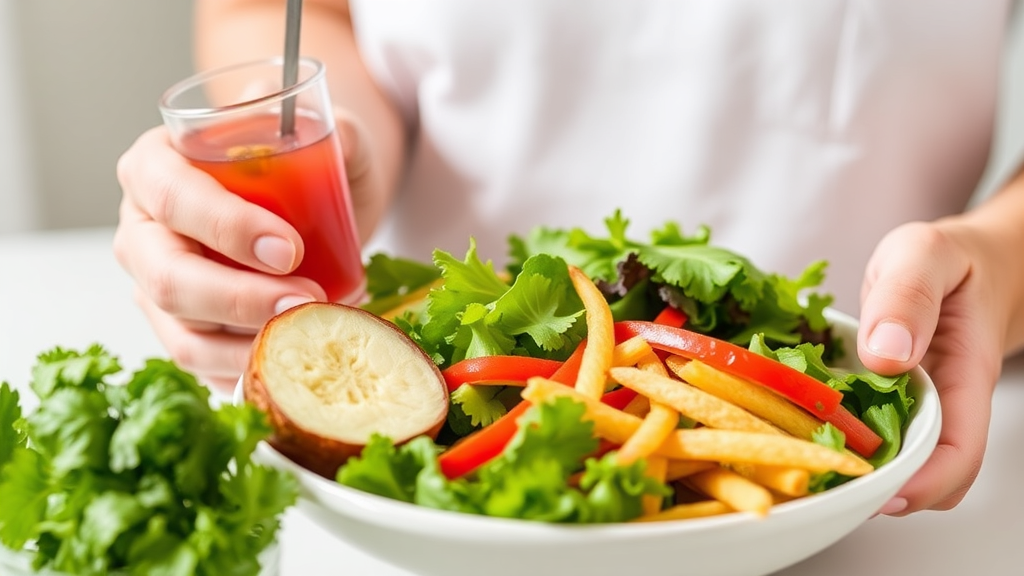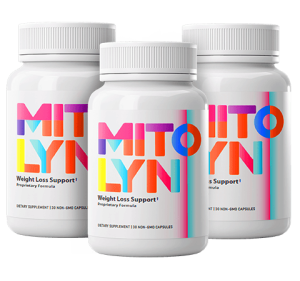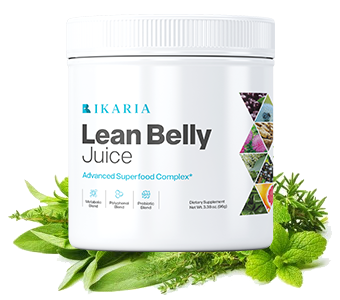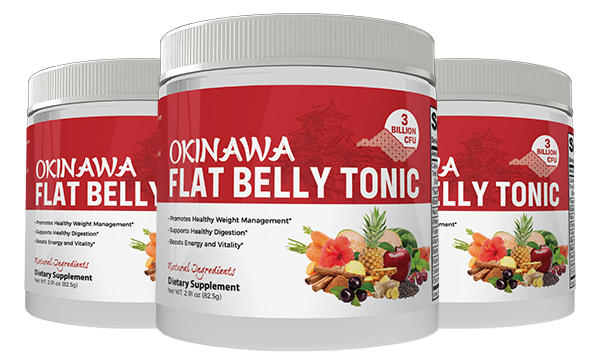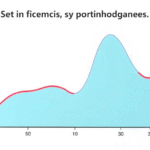The Role of Portion Control in Effective Fat Loss
Understanding portion control is key for anyone looking to achieve effective fat loss. It plays a vital role in managing energy intake and can drastically affect your success on a weight loss journey.
Many people struggle with portion sizes when it comes to meals and snacks. This often leads to consuming more calories than needed, which can hinder fat loss efforts. By learning how to control portions, you can create a sustainable way of eating that supports your fat loss goals.
Why Portion Control Matters
1. Caloric Balance: To lose fat, you need to burn more calories than you consume. Portion control helps you manage your caloric intake effectively.
2. Mindful Eating: Paying attention to how much you eat encourages mindfulness. You’ll start to notice your hunger cues and recognize when you’re full.
3. Consistency: Implementing portion control consistently can lead to better long-term results. You won’t be overwhelmed by drastic changes, making it easier to stick to your plan.
4. Improved Digestion: Eating smaller meals can improve digestion, as your body has to work less to process food.
5. Reduced Food Waste: Portion control can lead to less waste. By measuring what you eat, you can save food and money.
Research shows that people who practice portion control tend to consume fewer calories and lose weight more effectively. However, it’s not enough to simply cut back on your portions. It’s also crucial to understand how to determine proper serving sizes for various food groups.
How to Control Portions
Here are practical tips to help you control portion sizes:
- Use smaller plates and bowls to trick your brain into thinking you’re consuming more.
- Measure your food until you get a sense of appropriate portions.
- Pay attention to serving sizes listed on food packages.
- Prioritize whole, minimally processed foods; they tend to have fewer calories compared to processed snacks.
- Pre-portion snacks into bags instead of eating directly from the package.
- Take time to eat slowly; your brain takes about 20 minutes to register fullness.
Tracking your food intake can also foster a better understanding of portion sizes. Many apps and tools are now available that make it easy to log what you eat. These tools help you stay accountable and provide insights into your eating habits.
Understanding Serving Sizes
Different food groups have recommended serving sizes that can guide your portion control efforts. Here’s a simple table to illustrate typical serving sizes:
| Food Group | Recommended Serving Size |
|---|---|
| Vegetables | 1 cup raw or 1/2 cup cooked |
| Fruits | 1 medium fruit or 1/2 cup fresh, frozen, or canned |
| Grains | 1/2 cup cooked rice or pasta |
| Protein | 3 ounces cooked chicken, beef, or fish |
| Dairy | 1 cup milk or yogurt |
Portion control is not just about less food; it’s about more awareness. When you are conscious of how much you are consuming, you’re more likely to make healthier choices. To reinforce these habits, consider incorporating these strategies into your lifestyle.
The Psychological Aspect of Portion Control
It’s important to recognize the psychological effects of portion control. The size of the portion can dictate how much you eat mentally. Research suggests that the larger the serving size, the more people tend to eat. By controlling the portions you serve, you can produce a more satisfying meal without overeating. Choose My Plate provides excellent resources to help understand portion sizes better and how they fit into a balanced diet.
In the quest for effective fat loss, portion control is not just a tool but an essential skill. As you learn to manage your portions, you’ll find it easier to make healthier food choices and reach your fat loss goals. Understanding how much to eat can aid in fostering a positive relationship with food while promoting overall health and wellness.
For additional tips on portion control and meal planning, visit Eat Right.
Understanding Hunger Cues: Listening to Your Body
Understanding hunger cues is essential for developing a healthier relationship with food. Your body provides signals that indicate when it needs nourishment or when it is satisfied. By learning to listen to these signals, you can improve portion control and enhance your overall well-being.
What Are Hunger Cues?
Hunger cues are physiological and psychological signals the body sends to communicate its need for food. These can manifest in various ways, including:
- Physical Signals: Growling stomach, light-headedness, or fatigue.
- Emotional Cues: Irritability or low energy levels.
- Mental Signals: Difficulty concentrating or focusing on tasks.
The Importance of Listening to Your Body
By paying attention to your hunger cues, you can make more mindful eating choices. This practice helps in several ways:
- Prevents Overeating: Understanding when you’re truly hungry can help you avoid consuming excess calories.
- Enhances Satisfaction: Eating in response to genuine hunger often leads to greater satisfaction and can prevent cravings.
- Improves Digestion: Eating only when your body signals hunger can lead to better digestion and energy levels.
Types of Hunger
Recognizing different types of hunger can further help you tune in to your body’s needs:
1. Physical Hunger
This is when your body shows clear signs of needing sustenance. It usually develops gradually, giving you time to prepare a meal. It’s crucial to eat when you experience physical hunger, as ignoring it may lead to overeating later.
2. Emotional Hunger
Emotional hunger typically arises from feelings such as stress, boredom, or sadness. This kind of hunger can manifest rapidly and may lead you to crave specific comfort foods. Being aware of this can help you address your feelings without resorting to food.
3. Cravings
Cravings can be different from hunger. They are often specific and emotionally driven rather than a response to your body’s nutritional needs. Differentiating between cravings and actual hunger can assist you in making better food choices.
Strategies to Tune into Hunger Cues
Here are some effective strategies to help you listen to your body’s hunger cues:
- Keep a Food Diary: Track what you eat and how you feel after eating. This can highlight patterns and help you understand your hunger signals.
- Pace Yourself: Slow down while eating. Enjoy each bite and recognize when you start feeling satisfied.
- Stay Hydrated: Sometimes, dehydration is mistaken for hunger. Drinking enough water can help you decipher your body’s true needs.
Common Mistakes to Avoid
It is important to avoid some common pitfalls when trying to understand hunger cues:
- Ignoring Your Body: Dismissing your body’s signals can lead to unhealthy eating habits.
- Emotional Eating: Using food as comfort can blur the lines between hunger and emotional cues.
- Overemphasizing Numbers: Focusing too much on calorie counts can detract from your ability to listen to hunger cues.
The Role of Mindfulness in Eating
Mindfulness can greatly enhance your ability to recognize and respond to hunger cues. By practicing mindfulness, you learn to appreciate food and become attuned to your body’s signals. This could involve:
- Mindful Eating Practices: Focus on the texture, flavor, and smell of your food.
- Relaxed Environment: Try to eat in a calming space free from distractions.
These strategies can lead to lasting changes in how you approach each meal. For more resources on mindfulness and hunger cues, you’re encouraged to explore Eating Mindfully and Mindful.org.
Listening to your body when it comes to hunger can pave the way for a healthier and more enjoyable eating experience. By being more aware of your signals, you can improve your health while fostering a more positive relationship with food.
The Psychological Benefits of Smaller Portions
When it comes to managing weight and promoting healthier eating habits, the psychological benefits of smaller portions can’t be overlooked. Adjusting portion sizes can lead to a profound shift not only in how we view food but also in our emotional relationship with eating. Understanding these psychological aspects can be key in your journey towards better health.
One primary benefit of smaller portions is their impact on satisfying cravings. When you enjoy a smaller serving of a favorite dish, it can create a sense of satisfaction without inducing the guilt often associated with overeating. The idea of moderation allows you to relish the flavors while still feeling in control. This control can stem from knowing you can indulge without going overboard, which ultimately helps prevent feelings of deprivation.
Additionally, smaller portions promote mindful eating. By consciously deciding to eat less, you can dedicate more attention to the flavors and textures of your food. This heightened awareness encourages appreciation and enjoyment, making meals feel fulfilling on a deeper level. Mindful eating connects you more closely with your body’s hunger cues, letting you recognize when you’re satisfied rather than overly full.
Another psychological benefit is the reduction of stress associated with meal planning and preparation. When you decide to serve smaller portions, you may find that meals become easier to manage. You can prepare various foods without overwhelming yourself or your family, leading to less anxiety around mealtime. This also allows for more creativity with different ingredients, paving the way for a balanced diet without the pressure to over-consume.
Smaller portions can also foster a positive mindset about body image. When you learn to appreciate smaller servings, it often leads to improved body satisfaction. Instead of fixating on restrictive diets or feeling guilty after indulging, focusing on portion control fosters a sense of balance. You’re empowered to make choices that support your health without entering a cycle of shame or stress over what you eat.
To help illustrate the psychological impact, here’s a comparison of two eating scenarios:
| Scenario | Eating Larger Portions | Eating Smaller Portions |
|---|---|---|
| Mindfulness | Often distracted, leading to overeating | Focused, leading to satisfaction |
| Guilt | More feelings of guilt or regret | Reduced guilt, focus on moderation |
| Body Image | Negative perception | Improvement in self-esteem |
| Cooking Stress | Overwhelming preparation | Reduced anxiety with manageable meals |
Moreover, portion control can be invaluable for social settings. When dining out or sharing meals with others, smaller portions allow for shared tasting experiences without the pressure of overeating. This can transform social meals into opportunities to enjoy various dishes, creating a positive and communal atmosphere around food.
Another significant aspect to consider is the potential impact on long-term eating habits. By consistently practicing portion control, you train your brain to recognize moderation as a norm rather than an exception. Over time, this can reshape your overall approach to food, allowing you to make choices aligned with your health goals while maintaining a positive relationship with eating.
Smaller portions is a journey that involves adjusting both your physical habits and mental mindset. It empowers you to develop a healthier, satisfying relationship with food, fosters self-control, and encourages appreciation for the nourishment meals provide.
In the quest for better health, understanding and embracing the psychological benefits of smaller portions can guide you to making mindful food choices. To explore further resources related to the impact of portion control on well-being, check out websites such as Eat Right and The American Society for Nutrition. These platforms offer insights that can enhance both your understanding and practice of mindful eating.
Meal Prepping Strategies for Controlled Portions
Meal prepping is a powerful tool for anyone looking to manage their weight and maintain controlled portions. By preparing meals ahead of time, you can ensure that you’re eating the right amount of food while still enjoying flavorful dishes. Here are some effective strategies to help you master meal prepping for controlled portions.
Understanding Your Portion Needs
Before you start meal prepping, it is essential to understand your portion needs. Every body is different, and knowing how much you should eat can make a big difference. Here’s how to determine your portion sizes:
- Calculate your daily caloric needs: Use an online calculator to estimate how many calories you need based on your age, gender, activity level, and weight goals.
- Understand macronutrient ratios: Knowing how to balance proteins, fats, and carbohydrates can help you design more satisfying meals.
- Use tools like measuring cups: Invest in a set of measuring cups or a kitchen scale to help you portion out individual servings accurately.
Choosing the Right Containers
The containers you use for meal prepping play a crucial role in controlling your portions. Here are some tips for selecting the right ones:
- Opt for portion-controlled containers: Look for containers that have clearly marked portion sizes, which makes it easy to track what you are eating.
- Choose airtight containers: This will keep your food fresh longer, allowing you to maintain your meal prep throughout the week.
- Variety in sizes: Having different sizes of containers lets you prepare snacks as well as full meals.
Plan Your Meals Wisely
Meal planning is vital for successful meal prepping. By thoughtfully planning your meals, you can ensure a balanced diet while controlling portion sizes. Here’s how to do it effectively:
- Create a weekly menu: Outline what meals you will have each day. This not only guides your shopping, but it can also help you avoid impulse eating.
- Batch cooking: Prepare larger quantities of staple items like rice, quinoa, or roasted vegetables. This saves time and ensures you have healthy options on hand.
- Include variety: To keep things interesting, try to mix different protein sources, grains, and vegetables throughout the week.
Tools for Meal Prepping
Using the right tools can make meal prepping much more manageable. Here are some must-haves for an effective meal prep:
- Sharp knife: A good knife can make chopping vegetables quick and easy.
- Cutting board: Having a designated space for prepping keeps your kitchen organized.
- Food processor: This can save you time when you need to chop or blend ingredients.
- Slow cooker or Instant Pot: These devices can prepare meals with minimal effort, allowing you to focus on portion control.
Track Your Portions
Once your meals are prepped, tracking your portions can ensure you’re sticking to your goals. Here are some techniques to help you with that:
- Keep a food diary: Writing down what you eat can help you stay aware of your portion sizes.
- Use a mobile app: Consider apps that allow you to log your food intake, making tracking more accessible and convenient.
- Practice mindful eating: Focus on eating slowly and savoring your food, as this can help you recognize when you’re full.
Meal prepping can greatly aid in maintaining controlled portions, leading to effective fat loss and a healthier lifestyle. For more resources, check out Eat Right, which offers guidance on balanced meals and portion control, or visit Skinny Taste for delicious, portion-friendly recipes.
Consistency is key. By practicing these meal prepping strategies, you will gain the ability to manage your portion sizes more effectively. Start today, and enjoy the journey to healthier eating!
Common Portion Size Mistakes to Avoid
Portion control plays a crucial role in maintaining a healthy diet and achieving your fat loss goals. However, many people make common mistakes that can sabotage their efforts. Understanding these pitfalls can lead to better eating habits and ultimately, greater success in fat loss. Let’s take a closer look at some of these mistakes and how to avoid them.
Overestimating Portion Sizes
One of the biggest errors people make is overestimating what a proper portion size actually is. Often, we fill our plates to the brim or serve ourselves heaping servings, thinking it’s reasonable. To avoid this mistake, consider the following:
- Use measuring cups or a food scale to familiarize yourself with the correct portion sizes.
- Compare your servings to pre-packaged serving sizes.
- Over time, train your eye to visually gauge accurate portions without excessive measuring.
Ignoring Serving Sizes on Labels
Food labels can provide valuable information, yet many people ignore the serving sizes stated on them. A snack that seems small can actually be loaded with calories if the serving size is not respected. Here’s how to avoid this issue:
- Always check the serving size before eating.
- Divide packaged snacks into smaller bags to ensure you don’t consume more than intended.
- Be aware of multiple serving sizes in a single package. If you consume the entire bag, calculate your intake based on the servings.
Eating Straight from the Package
One common portion size mistake is munching straight from the bag or box. This practice often leads to mindless eating and larger-than-intended portions. To combat this behavior:
- Always serve food onto a plate or in a bowl.
- Establish a designated snack area with pre-portioned servings.
- Be mindful of your snacking habits, aiming to enjoy each bite rather than rushing through the process.
Skipping Meals
Another mistake is skipping meals in hopes of cutting down calories. This approach can backfire, leading to overeating later on. To maintain a balanced intake:
- Eat regular meals and snacks throughout the day to keep hunger at bay.
- Focus on incorporating high-fiber and high-protein foods, which can keep you fuller for longer.
- If you’re short on time, consider packing healthy snacks to avoid the temptation of junk food.
Underestimating Liquid Calories
People often forget that drinks can carry significant caloric value. Beverages with added sugars can contribute to your daily intake without satisfying hunger. To manage this effectively:
- Monitor your calorie intake from beverages including sodas, juices, and alcoholic drinks.
- Opt for water or unsweetened beverages as much as possible.
- When indulging in higher-calorie drinks, consider reducing portion sizes accordingly.
Not Paying Attention to Hunger Cues
A common mistake is eating out of habit or boredom rather than in response to hunger. This can lead to consuming portions larger than necessary. To ensure you eat mindfully:
- Pause before reaching for food; ask yourself if you’re truly hungry.
- Engage in activities that serve as alternatives to eating when you’re bored.
- Practice mindful eating by focusing on your food and savoring each bite.
Adjusting your portion sizes doesn’t have to be difficult. By being aware of these common mistakes, you can make more informed decisions about what you eat and how much you consume. For further information on portion control and healthy eating, consider exploring resources from The Academy of Nutrition and Dietetics or ChooseMyPlate.gov. Remember, managing portion sizes can greatly impact your fat loss journey and help you achieve your health goals.
The Science Behind Caloric Intake and Weight Loss
The relationship between caloric intake and weight loss is a fundamental component of understanding how our bodies process food and energy. When we consume more calories than we burn, our bodies store the excess as fat. Conversely, when we burn more calories than we consume, our bodies utilize stored fat for energy, leading to weight loss. This cycle relies on the basic principles of energy balance.
Understanding Caloric Intake
Caloric intake refers to the number of calories consumed through food and beverages. It provides the energy needed for daily activities, including basic physiological functions like breathing and digestion. To effectively manage your weight, it’s crucial to have a clear understanding of how many calories you are taking in. Here are some factors that influence caloric intake:
- Age: Metabolic rates generally decrease with age, requiring fewer calories.
- Gender: Males typically have a higher metabolic rate compared to females, leading to different caloric needs.
- Body Composition: Muscle burns more calories at rest than fat, affecting overall caloric requirements.
- Activity Level: The more active you are, the more calories you need to fuel your activity.
The Role of Metabolism
Metabolism is the process by which your body converts food into energy. It can be broken down into two main components:
- Anabolism: The building up of energy stores, including fat.
- Catabolism: The breaking down of energy stores to be used as fuel.
Your basal metabolic rate (BMR) constitutes a significant portion of your daily energy expenditure, as it represents the energy used for basic bodily functions. BMR can be influenced by various factors, such as genetics, body composition, and hormonal levels.
The Caloric Deficit and Its Importance
A caloric deficit occurs when you consume fewer calories than your body needs to maintain its current weight. This deficit prompts the body to use stored fat for energy, leading to weight loss. To achieve a successful caloric deficit, you can:
- Reduce your caloric intake by choosing healthier, lower-calorie foods.
- Increase physical activity to burn more calories.
It’s important to note that creating a sustained caloric deficit is essential. Rapid weight loss often leads to muscle loss and can negatively impact your metabolism, making it harder to keep the weight off long-term.
Calculating Your Caloric Needs
Understanding your caloric needs can help you design an effective weight-loss plan. Here’s a simple breakdown to calculate your daily caloric needs:
- Determine your Basal Metabolic Rate (BMR) using the Mifflin-St Jeor equation.
- Multiply your BMR by an activity factor that suits your lifestyle:
- Sedentary: BMR x 1.2
- Lightly active: BMR x 1.375
- Moderately active: BMR x 1.55
- Very active: BMR x 1.725
- Subtract 500-1000 calories for weight loss to find your target caloric intake.
Quality vs. Quantity of Calories
While monitoring caloric intake is essential, the quality of those calories matters too. Choosing whole, nutrient-dense foods over processed foods can lead to more sustained energy levels and a healthier metabolism. Foods rich in fiber, lean proteins, and healthy fats can help you feel full longer, making it easier to maintain a caloric deficit.
Success Factors for Weight Loss
To summarize, understanding caloric intake and its effect on weight loss involves the following key elements:
- Monitoring calorie intake: Track what you eat to maintain awareness.
- Creating a caloric deficit: Use diet, exercise, or a combination of both.
- Choosing high-quality foods: Focus on whole foods to enhance satiety.
- Staying consistent: Weight loss is a gradual process that requires patience.
For additional resources on caloric intake and effective weight loss strategies, visit ChooseMyPlate.gov or explore expert advice at Nutrition.gov.
How to Make Portion Control a Sustainable Habit
Adopting portion control can significantly improve your relationship with food and assist you in achieving your health goals. It can be challenging to embrace portion control as a lasting habit, but with some strategies and a sprinkle of commitment, it can become second nature. Here are some effective tips to make portion control a sustainable habit.
Understanding Your Portions
First, it’s essential to know what a portion is. A portion refers to the quantity of food you decide to eat at one time. Understanding the difference between serving size and portion size is important. Serving size is typically found on packaging, while portion size is what you choose to eat. Use these tips to help you determine ideal portions:
- Use measuring cups and spoons: Initially, use these tools to measure out your food. This practice can help you learn what proper portion sizes look like.
- Pay attention to visual cues: After some time, you can start to rely on visual cues to estimate portion sizes. For example, a serving of protein is often roughly the size of your palm, while a serving of grains is about the size of a fist.
- Check nutritional information: Familiarize yourself with nutrition labels. They provide details about portion sizes and calorie counts that can help you make smarter choices.
Utilizing Smaller Plates
Another effective strategy is to use smaller plates and bowls. Studies suggest that people tend to eat less when they use smaller dishware. By decreasing your plate size, you can trick your brain into feeling satisfied with a smaller portion. This can significantly impact your fat loss efforts over time.
Mindful Eating
Engaging in mindful eating is crucial. Instead of eating while distracted—like watching TV or scrolling through your phone—focus on your meal. Chew slowly, savor each bite, and listen to your hunger cues. Mindful eating can help you recognize when you’re full, leading to better portion control.
Pre-Plan Your Meals
Meal planning can be a game-changer. When you prepare meals ahead of time, you have greater control over portion sizes. Here’s how you can effectively plan:
- Set aside time each week: Dedicate an hour or two to plan your meals. Consider what you want to eat and portion out everything.
- Batch cook: Prepare larger quantities of dishes you enjoy. Portion them into containers for easy grab-and-go meals throughout the week.
- Create a shopping list: Stick to a list while grocery shopping to avoid impulse buys that can derail your portion control efforts.
Healthy Snack Alternatives
Snacking can easily lead to overeating if not controlled. Opt for healthier alternatives that are already portioned out. For example:
| Snack | Typical Portion Size |
|---|---|
| Almonds | 1 ounce (approximately 23 almonds) |
| Greek yogurt | 1 cup |
| Baby carrots | 1 cup |
| Apple slices | 1 medium apple |
Stay Hydrated
Sometimes, we confuse hunger with thirst. Before reaching for a snack, try drinking a glass of water instead. Hydration can help you feel fuller and reduce the chances of overeating. Keeping a water bottle nearby can also remind you to stay on track.
Track Your Progress
Monitoring your eating habits can help reinforce portion control. Consider keeping a food diary or using an app to track what you eat. Noting portion sizes and how you feel can provide insights into your eating patterns and adjustments needed.
Consistency is Key
Like any habit, consistency is vital in portion control. Practice makes perfect, so don’t be too hard on yourself if you slip up. Keep aiming for progress over perfection. Remember that making gradual improvements will make your efforts more sustainable in the long run.
For further support on making portion control a consistent part of your life, consider visiting sites such as Choose My Plate for helpful resources and Eat Right for dietary advice.
Implement these tips to help integrate portion control into your daily routine. You’ll soon find it becomes a natural part of your lifestyle, ultimately aiding in achieving your fat loss goals.
Key Takeaway:
Key Takeaways on the Impact of Portion Control for Fat Loss
Portion control is a crucial factor in achieving effective fat loss. It is more than just a method of measuring your food; it taps into your relationship with food and your body. When you pay attention to your portion sizes, you can help manage your caloric intake, which is essential for losing weight. The journey toward a healthier weight begins with recognizing that the amount you consume plays a significant role in your fat loss journey.
Understanding your hunger cues is vital. Listening to your body can help you determine when you are genuinely hungry versus eating out of boredom or emotion. This awareness allows you to enjoy your meals more and prevents overeating. Learning to distinguish between hunger and cravings can help you develop healthier eating habits over time.
The psychological benefits of controlling portion sizes are also noteworthy. Smaller portions can make meals seem more satisfying, allowing you to enjoy your food without guilt. This shift can create a positive relationship with eating, making it easier to stick to your fat loss goals. When you view smaller portions as an opportunity for mindful eating rather than deprivation, your mindset shifts to one of empowerment.
Meal prepping is another effective strategy to maintain controlled portions. By planning your meals ahead of time, you can ensure that you control serving sizes and reduce the temptation to indulge in larger portions. This not only saves time but also helps you stay committed to your fat loss goals during the week.
Being aware of common portion size mistakes is crucial. Many of us underestimate what a proper serving looks like, which can easily lead to consuming excess calories. It’s essential to educate yourself about appropriate portion sizes for different food groups to avoid this pitfall.
Understanding the science behind caloric intake and weight loss can also fortify your efforts. Weight loss occurs when you consume fewer calories than you burn. By controlling your portions, you can create a sustainable calorie deficit that leads to fat loss over time.
Ultimately, making portion control a sustainable habit involves consistency and practice. Start small and gradually implement strategies that work for you. By focusing on portion sizes and fostering a healthy relationship with food, you set the stage for lasting change and an overall healthier lifestyle. Remember, healthy living is a journey, not a destination.
Conclusion
Effective fat loss is about more than just what you eat; it also heavily relies on how much you eat. Understanding the role of portion control can be a game-changer in your weight loss journey. By listening to your body and recognizing hunger cues, you’re better equipped to fuel yourself efficiently without overeating. Smaller portions not only help manage caloric intake but can also boost your psychological well-being. The idea of enjoying food without guilt can be liberating.
Employing meal prepping strategies allows you to practice portion control with ease. Planning meals in advance helps eliminate guesswork and can prevent common pitfalls associated with portion sizes. Being aware of frequent mistakes, like misjudging serving sizes or ignoring nutritional labels, can make a considerable difference in your results.
Examining the science of caloric intake shows that maintaining the right balance is vital for effective fat loss. A lower caloric intake, paired with the nutrients your body craves, facilitates sustainable weight management. Cultivating healthy habits around portion control can take time, but the effort is worthwhile. Consistently applying these practices not only helps you meet your fat loss goals but also fosters a healthier relationship with food.
By focusing on these strategies, you can ensure that portion control becomes an integral part of your lifestyle, leading to lasting results and an overall healthier you. The journey towards fat loss doesn’t have to be daunting; with the right tools and mindset, you can achieve your goals while still enjoying the foods you love.
